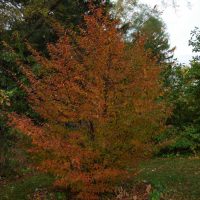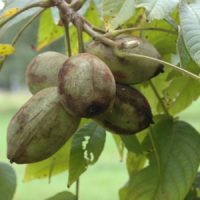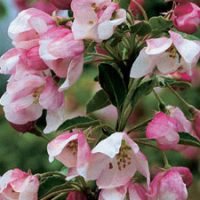Additional information
| Product Size | |
|---|---|
| H2O | |
| Sun | |
| Bloom Color | Yellow |
| Shrub Size | |
| Attracts | Birds, Pollinators |
| Bloom Period | |
| Spread | |
| Fall Color | |
| Tolerates/Resistant To | Rabbit |

$45.00
Rhus glabra, commonly known as Smooth Sumac, is a native plant species found throughout the state of Illinois. This deciduous shrub belongs to the Anacardiaceae family and is a prominent member of the Illinois flora. Here’s a detailed description of Rhus glabra in the Illinois landscape:
1. **Appearance**: Smooth Sumac typically grows as a multi-stemmed shrub, reaching heights of 6 to 20 feet (1.8 to 6 meters). It features an open, spreading growth habit with slender branches. The name “Smooth Sumac” alludes to its smooth, hairless stems and twigs.
2. **Leaves**: The leaves of Rhus glabra are pinnately compound, consisting of multiple leaflets. They are arranged alternately along the stems. In the spring and summer, the leaves are bright green, providing a lush appearance to the plant.
3. **Flowers**: In late spring to early summer, Smooth Sumac produces dense, pyramidal clusters of small, greenish-yellow flowers. These flower clusters, called panicles, are an important nectar source for pollinators such as bees and butterflies.
4. **Fruits**: One of the most distinctive features of Smooth Sumac is its clusters of fuzzy, crimson-red berries, which ripen in late summer and persist through the fall. These berries are a valuable food source for numerous bird species, including cardinals and turkeys, making the shrub an important component of Illinois’ wildlife habitat.
5. **Autumn Colors**: Smooth Sumac is known for its stunning autumn foliage. As the seasons change, the leaves turn brilliant shades of red, orange, and purple, adding vibrant color to the Illinois landscape.
6. **Ecological Importance**: Rhus glabra plays a crucial ecological role in Illinois by providing food and shelter for wildlife. The berries attract birds, while the shrub’s dense growth provides nesting sites and cover for various animals.
7. **Environmental Adaptability**: This native plant is highly adaptable and can thrive in a variety of soil types, including rocky or poor soils. It is often found in open woodlands, along roadsides, and in disturbed areas.
8. **Cultural and Landscaping Uses**: While not typically used in formal landscaping, Smooth Sumac has been employed for erosion control, particularly on slopes and in areas with poor soil quality. Its vibrant fall foliage and attractive berries also make it a popular choice for naturalistic and wildlife-friendly landscapes.
9. **Historical and Cultural Significance**: Native American tribes historically used various parts of Smooth Sumac for medicinal purposes and as a source of dye. The berries can be used to make a refreshing and tart beverage known as “sumac-ade.”
Rhus glabra, or Smooth Sumac, offers aesthetic appeal, ecological importance, and historical significance. Its striking foliage, vibrant berries, and adaptability to various environmental conditions make it a valuable component of the Illinois natural landscape, supporting local wildlife and adding beauty to the state’s ecosystems.

Also called American hornbeam. Finely textured, graceful understory tree with smooth, gray-fluted bark and red, yellow and orange fall color. Nice shade tree for small yards. Clean ornamental with no off-season. Highly adaptable. Full to half-day sun. Prefers moist, organically rich soils but will tolerate clay. Good replacement for buckthorn. Deer resistant.

NEW! Also called White Walnut. Nuts are milder than black walnut. Prefers full sun and medium to moist sites.

The common name “staghorn” is derived from hairy stems that look like bucks’ antlers. Requires full sun and good drainage. Nice red-orange fall color. Fruit is attractive to birds and wildlife. This small tree spreads aggressively by root suckers.

A miniature apple tree in most respects, prairie crabapple grows to 35 ft. with a dense, irregular form. A sometimes spiny shrub or small tree, with spreading branches and broad, open crown. Exfoliating bark reveals silvery-gray inner bark. The large, white or pink flowers clusters cover the tree. Fruits are eaten by several species of birds and mammals.